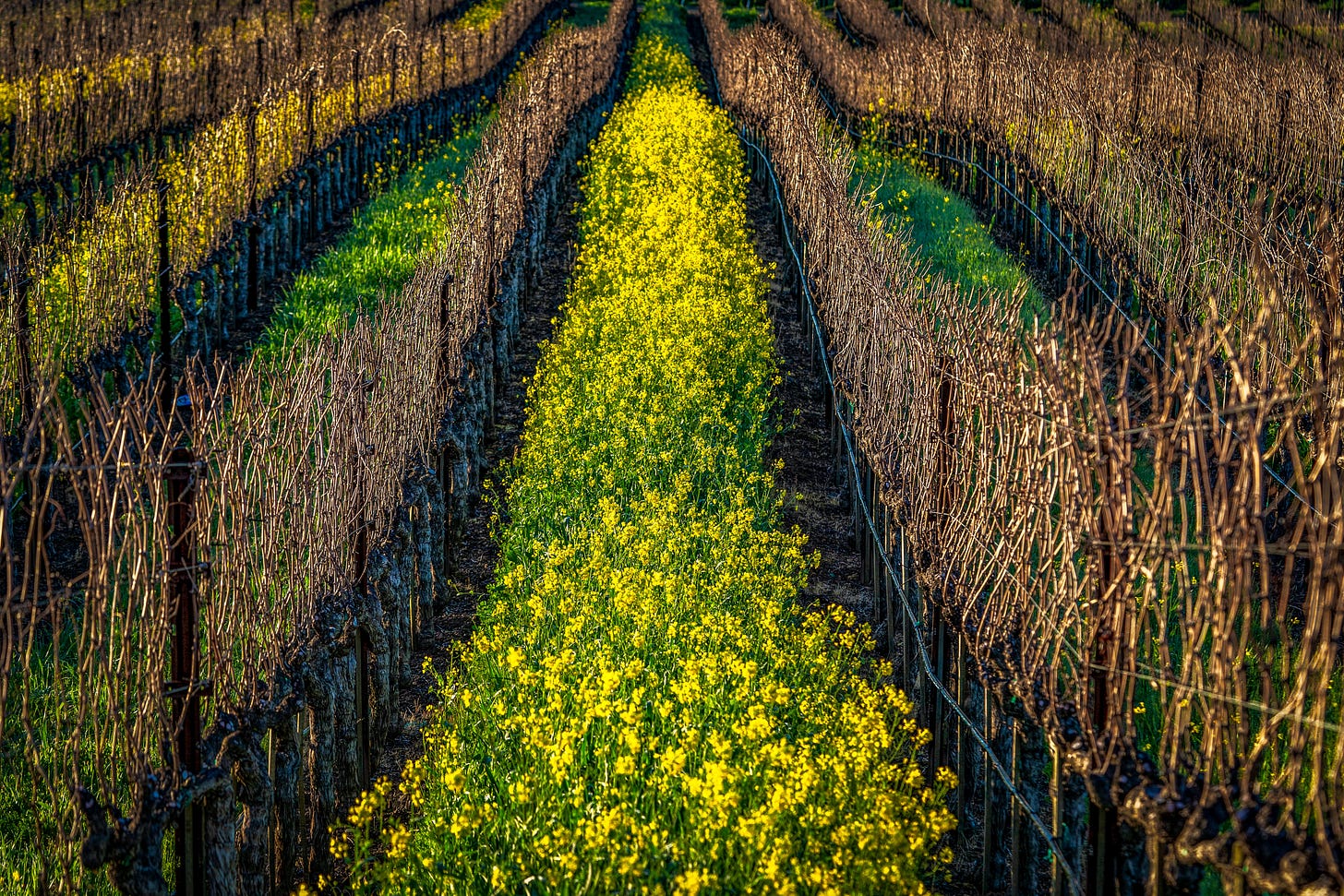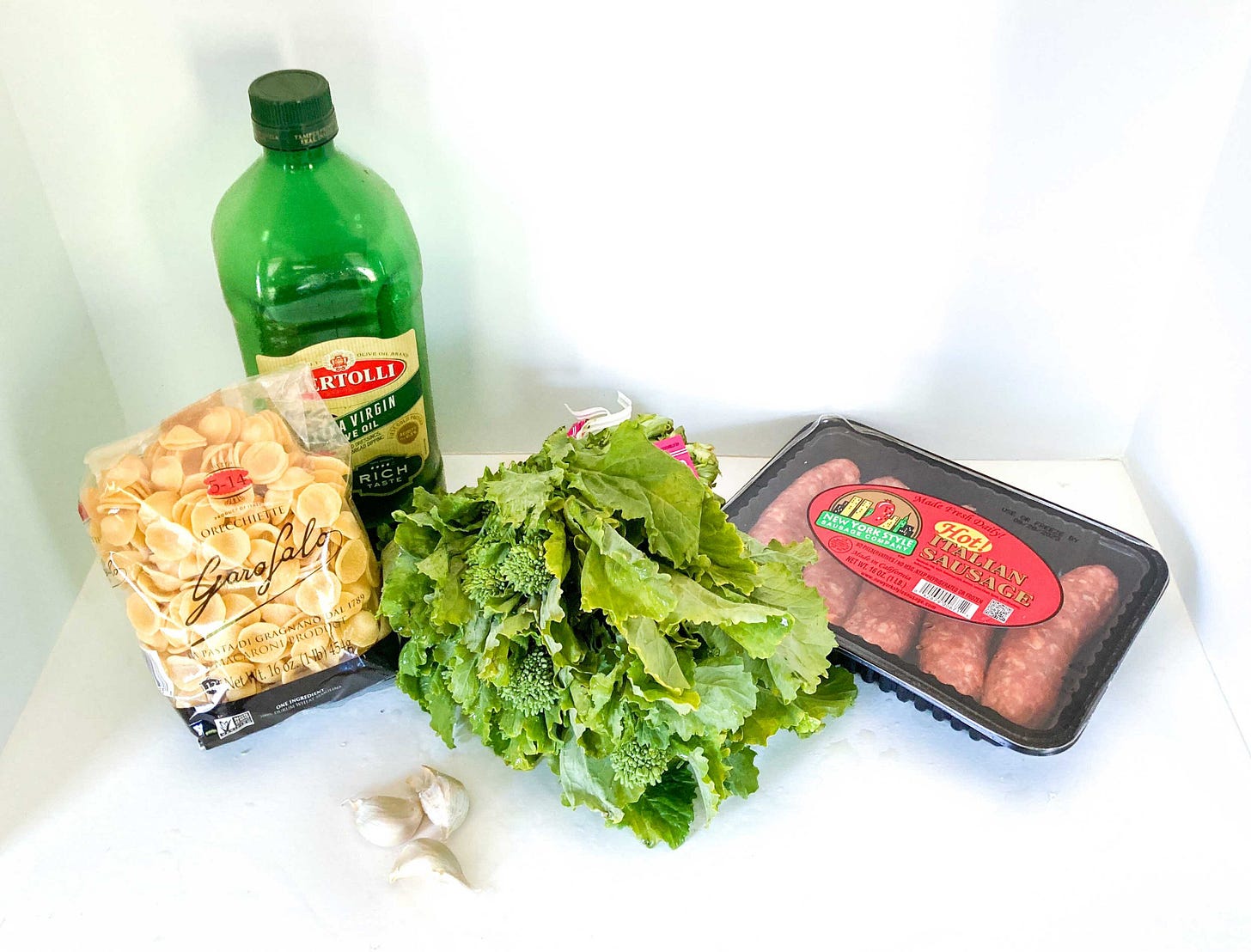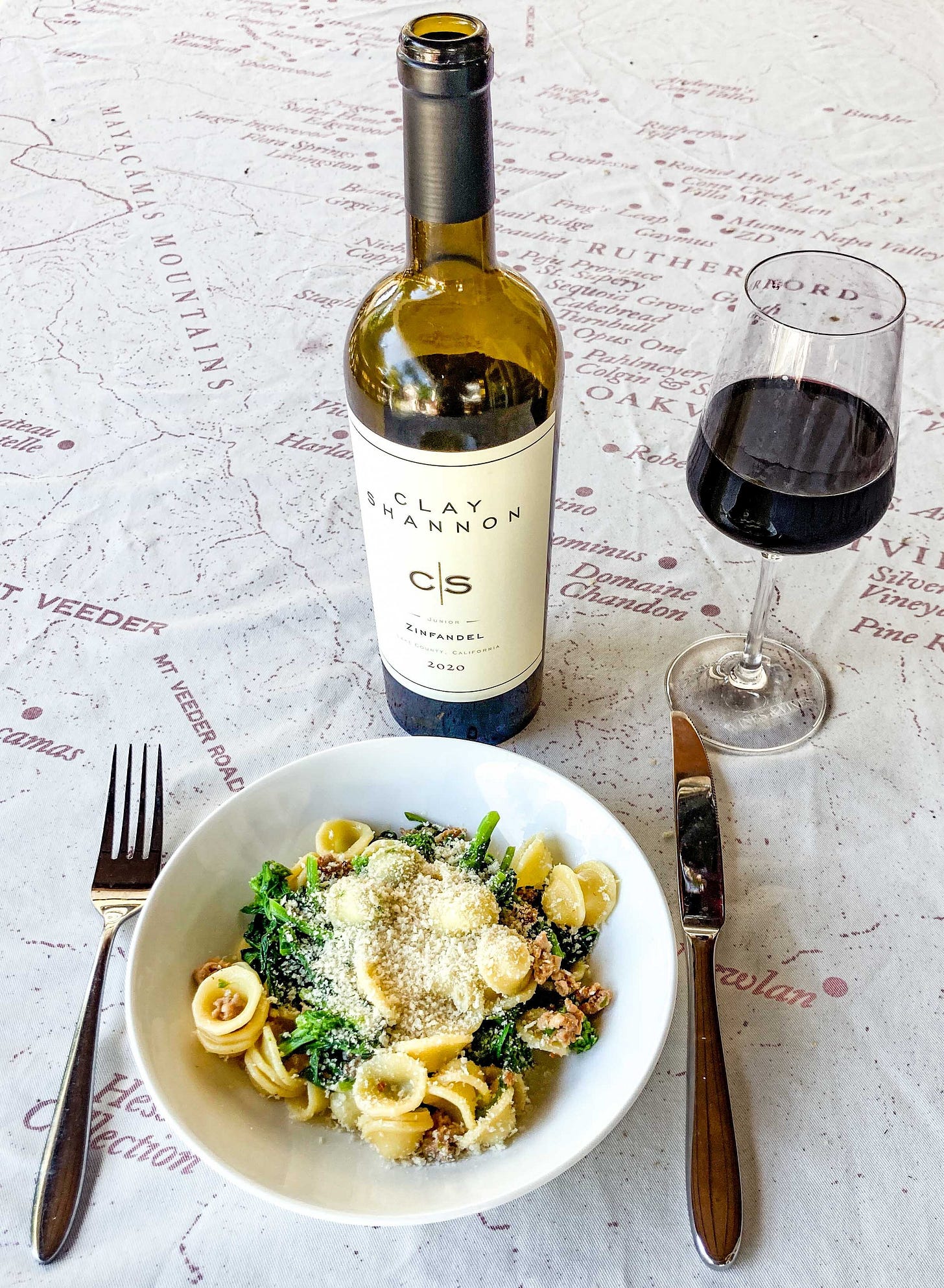Get ready now for the Mustard Celebration
By Paul Franson
NAPA, Calif. — Those of you who have been here for a while may remember when the Mustard Festival was created in the hope of attracting tourists to Napa Valley to see the impressive yellow mustard flower displays in the off-season. I’m not sure whether that goal was met, but it did provide lots of fun for locals during the quieter winter months and undoubtedly helped many local businesses.
One of those was Jessel Gallery, and in fact, artist Jessel Miller created iconic paintings that came to symbolize the festival and graced many of its products. The Mustard Festival name, however, belonged to the Sonoma public relations agency that managed and promoted it, and the festival ended as Napa boomed and local agencies, notably Visit Napa Valley, were created and took over visitor promotion.
Skip forward many years, and Jessel has almost singlehandedly resurrected the festival, now known as the Mustard Celebration. COVID slowed things, but a couple of years ago she created and inspired a few events to celebrate the invasive but pretty weed. Last year there were several events inspired by the mustard season, particularly around Jessel Galley on Atlas Peak Road near Silverado Resort and in Yountville, which has the most vibrant arts infrastructure and art promotional effort in the valley.
But they’re thinking bigger.
At a recent meeting, representatives of the Upvalley chambers of commerce, which handle most of their local visitor promotion; Visit Napa Valley, which does so countywide; and the Downtown Napa Association, whose purpose is obvious, gathered with representatives of arts businesses and organizations and some other businesses interested in participating during next winter’s celebration.
The goal is clear — to help local businesses during a quiet time — but there was considerable discussion of localized promotion versus countywide and special events versus ongoing ones. Some cities (and Jessel’s Atlas Peak nexus) have already picked time slots for concentrated efforts, but they also envision valley-wide promotion and experiences. Among the activities being discussed are cycling, golf, art, writing, music competitions and a mustard recipe contest.

Here are the dates already taken (at least tentatively), so if you’re affected you might keep this is mind:
Jan. 26-28 — Calistoga
Feb. 3 and 4 — Atlas Peak Area
Feb. 10 and 11 — Downtown Napa
Feb. 28 — Yountville Community Center event
Feb. 27-29 — Calistoga
March 1-3 — Town of Yountville plus kickoff of Photo Finale competition
March 1-31 — Photo Finale, Jessup Cellars, Yountville
March 2 and 3 — Jessel Gallery — art demonstrations
Of course funding is always an issue, though some parts of the celebration will naturally be financed by the various organizations. There’s plenty of time and opportunity for others to get involved. Contact Miller at napa_art@napanet.net.
Mustard and Napa Valley
As an aside, what’s the connection between the Napa Valley and mustard? It’s pretty and blooms in the winter, and it’s often used as a cover crop in vineyards. The condiment comes from the seeds of plants grown in the Midwest and Canada, but Dijon, famous for its hot mustard that uses wine rather than the more popular vinegar, is in Burgundy. They seem to favor white wine (chardonnay is most popular there) with dishes flavored with their mustard.
The mustard plant, however, is edible and tasty if you’re Italian or from the South, like me. Some of the mustard plants growing around here seem to be rapini, generally called broccoli rabe, and others are Southern field mustard (mustard greens). Rapini grows in the winter and tends to be a cold-weather dish. It’s excellent with sausage, garlic and pasta.
I was introduced to bitter greens and sausage with pasta on a trip to Puglia, Italy’s “heel.” Our winery hosts said that housewives traditionally just collected wild greens for a cheap meal, but at the winery where we were (and later in restaurants) they used cultivated versions. One is rapini, or cime di rapa, turnip greens from turnips that don’t develop a bulb. For some reason they’re called broccoli rabe here from broccoli di rapa or turnip broccoli due to their resemblance to broccoli. They aren’t particularly closely related to broccoli, though they, like mustard, are all in the brassica family.
These greens are all somewhat bitter, and I find them a good match with a tannic wine such as cabernet, though the bitterness can be tamed. Here are a couple of typical recipes, one with the green plants and one with the condiment.

You can use any related greens, including mustard greens or turnip greens. The more substantial stalks and buds of the rapini (at least part of what’s growing here during the winter) seem to better complement the pasta than simple leaves, but throw them in, too, if you have them. All of them are rather bitter, and one way to tame them is to cook them in lots of boiling salted water. That’s convenient since you need the water to boil the pasta and the salt and extracted flavor from the greens helps season the pasta without making it bitter.
The first recipe traditionally includes some sausage, and they prefer it spicy in the south of Italy (our hot sausage is derived from Calabria in the “toe” of Italy). I’ve found that Italians still consider this vegetarian since the meat is just to flavor the dish, not dominate it. You can use hot or sweet sausage or the vegetarian analogue, or leave it out altogether and add some pepper flakes if you like. One variation uses anchovies instead of sausage. Bulk sausage is a little easier. Otherwise you can peel it.
The traditional pasta used in Puglia is orecchiette — sturdy, thick, rough pasta that supposedly looks like “little ears.” The sausage gathers in the tiny bowls so you get some with each bite of pasta. It’s fun to make your own, but I recommend one of the rustic imported artisanal versions; the mass-produced ones are too wimpy. You can also use other pasta, such as fusilli or corkscrews. They all take longer to cook than you’d think, but don’t overcook them. You don’t need pepper if you use hot sausage, and Italians typically don’t use cheese on strongly flavored dishes but rather toasted (or lightly fried) bread crumbs.

BROCCOLI RABE WITH SAUSAGE AND PASTA
Start to finish: 45 minutes
Servings: 6
2 pounds broccoli rabe or rapini
Boiling water
Salt
1 pound orecchiette or other hearty pasta
1 pound hot or sweet bulk or link Italian sausage (You can also use the vegetarian version or just add some pepper flakes instead of hot sausage.)
¼ cup extra-virgin olive oil
3 large garlic cloves, sliced thinly
Lightly toasted sauteed bread crumbs (actually, panko is perfect. I “toast” them in a little olive oil.)
Peel stems of greens, if thick.
Cook greens in boiling salted water for 3 or 4 minutes. Remove with a spider and shock in cold water. Then drain, chop and set aside. Keep water boiling and add the pasta. It takes as long to cook as making the “sauce.”
Remove the casing from the sausage if it isn’t bulk and break up (not easy if it’s uncooked). Heat the olive oil in a large skillet and add sausage and continue to break into small pieces. Cook for a few minutes until no longer pink, add garlic and cook until the sausage is lightly browned and the garlic isn’t, 2 to 3 minutes. Add a bit of greens/pasta water to create a sauce so it’s not too dry, maybe ½ cup.
You can drain the fat and replace it with olive oil if you want. I don’t.
Add the blanched greens to the sausage mixture and stir until it’s all hot and well-integrated. Add drained pasta, stir and serve portions in bowls with toasted bread crumbs on top.
Serve this with an assertive red wine. In Puglia that might be Primotivo, genetically the same as zinfandel, but others work. I wouldn’t serve this peasant dish with an expensive cabernet, however. Save that for the steak, duck or lamb.

Rabbit or chicken in Dijon mustard is a traditional dish in Burgundy, but it can be made in many ways. Here’s a simple but tasty version. You can also make it with pork.
CHICKEN OR RABBIT IN DIJON MUSTARD AND WHITE WINE
Start to finish: 45 minutes
Servings: 4
8 bone-in, skin-on chicken thighs and drumsticks or pieces of rabbit
Salt and freshly ground black pepper, to taste
¼ teaspoon smoked paprika (pimentón) for smokier flavor (optional)
Flour for coating meat and sauce
Neutral oil for frying
1 cup smoked thick-cut bacon, diced
1 small onion or equivalent in shallots, finely diced
2 ounces butter
1 tablespoon flour
1/4 cup Dijon mustard (4 tablespoons)
1 teaspoon fresh thyme leaves
1 cup dry unoaked white wine
2 to 3 tablespoons heavy cream
Chopped Italian parsley or chives, for garnish
Salt and pepper the pieces of meat, then mix the paprika (optional) with flour and toss the meat in the mixture to coat.
Sauté in the oil at medium heat until lightly browned and almost done (I use an instant thermometer and look for 160 degrees in the center of the thickest meat.)
Remove chicken from pan and save.
Drain off most of the oil from the pan, add bacon and cook to soften, not crisp. Add chopped onions or shallots and cook until translucent but not brown. Add butter, and when it melts, add flour and mustard. Cook until it forms a thick paste, then add thyme and white wine and stir until it forms a sauce. Return meat to the pan to heat, then add cream.
Serve with sauce on the meat and a garnish of parsley or chives.
A white wine is recommended. Chardonnay would be traditional in Burgundy but not a big oaky one.
If you’d like to find out more about events in the Napa Valley, subscribe to NapaLife, Paul Franson’s weekly newsletter that focuses on news and events about food, wine and the arts – visual, literary and performing.




Thank you for this informative article about the mustard celebration and for the recipes.
What a fun read for this Tuesday morning. I cannot wait to try these simple but delicious sounding recipes. And, of course, your photos are fabulous. I recall living on Sulphur Springs Avenue as a young one and making endless "forts" in the mustard that grew between the grape vines. Such fun memories. Thank you.